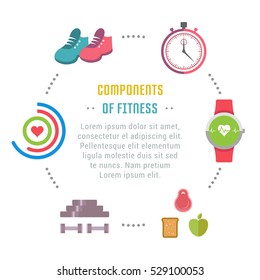Your physical fitness is your ability to perform
physical work,training,and other activities throughout your daily work
schedule.Physical fitness is multidimensional,and—based on your goals—some
components will be more valuable than others. Five key components define your
physical fitness:
- Cardio-respiratory (CR) endurance—how efficiently your body delivers oxygen and nutrients for muscular activity and transports waste from the cells
- Muscular strength—the greatest amount of force your muscle or muscle group can exert in a single effort
- Muscular endurance—the ability of your muscle or muscle group to perform repeated movements for extended periods
- Flexibility—the ability to move your joints (elbow or knee, for example) or any group of joints through their entire normal range of motion
- Body composition—the amount of body fat you have in comparison with your total body mass.
Improving the first three of these components will
improve your body composition by decreasing your body fat. Excessive body fat detracts
from the other fitness measures, reduces your physical and mental performance,
detracts from your appearance, and increases overall health risks. One
measurement of body fat is as a percentage of your total weight. The Army’s
maximum allowable percentages of body fat,by age and gender, are listed in the
table below. Besides your physical fitness, you should also work to improve
your motor fitness. Motor fitness—speed, agility, muscle power , eye-hand
coordination, and eye-foot coordination— directly affect a Soldier’s
performance on the battlefield. Appropriate training will improve these
elements up to each Soldier’s individual potential. The goal of the Army’s
fitness program is to improve physical and motor fitness through sound,
progressive, mission-specific physical training at both the individual and unit
levels.
BODY FAT STANDARD
|
||||
Ages
|
17 – 20
|
21 – 27
|
28 – 39
|
40+
|
Males
|
20%
|
22%
|
24%
|
26%
|
Females
|
30%
|
32%
|
34%
|
36%
|

0 Comments